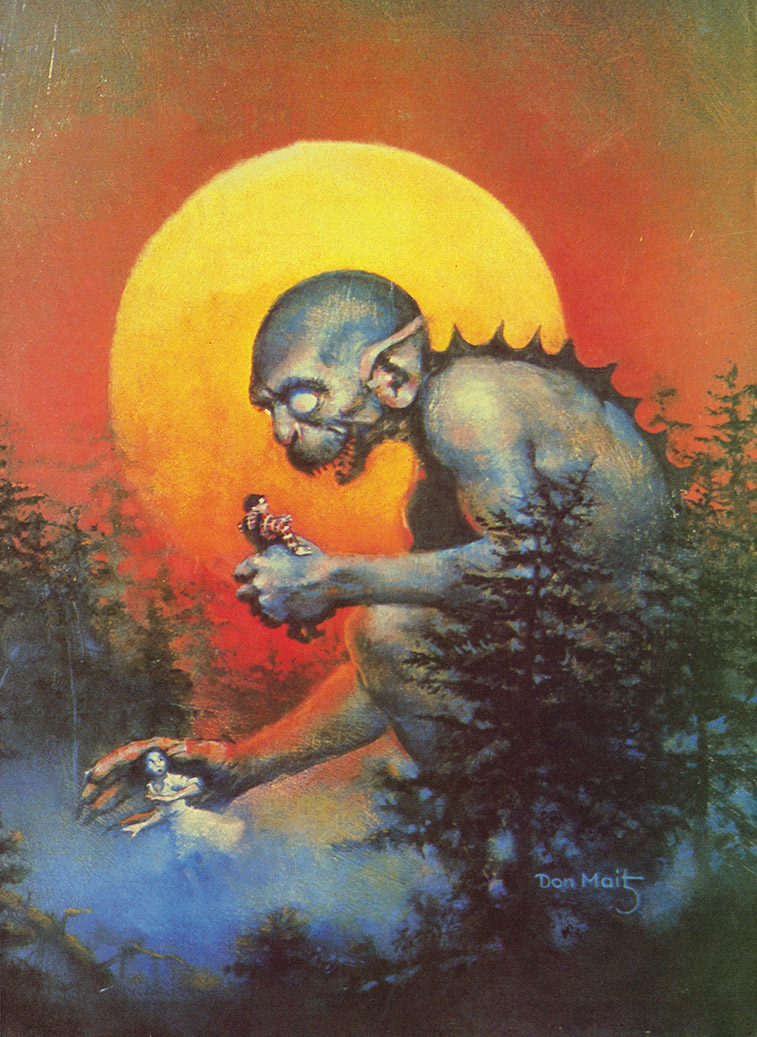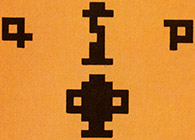
Conquering
Haunted House
How to spook the world’s eeriest videogame.
Object
A century ago, a recluse named Zachary Graves dwelt in an old four-story mansion. When he died, the house was condemned and shut down. A magic urn remains in the mansion,
and though it was shattered in the infamous earthquake of 1890, its full potency can be restored … if anyone is bold enough to enter the mansion and collect the pieces.

The twenty-four room mansion is allegedly haunted. Still, you want to be a magician so you enter the place. Within are several artifacts to help you in your search: a master key, a scepter which protects the wielder from evil spirits, and a box of matches.
You’ll need these items: in addition to the spectre of old man Graves, you’ve been told that there are tarantulas and vampire bats prowling the creaking corridors.
Variations
There are nine versions of the basic quest theme, each of which incorporates the elements of the game before it: 1. lighted walls and unlocked doors; 2. no lighted walls; 3. doors are all locked but the master key is plainly in view; 4. doors locked, the master key well-hidden; 5. extra tarantulas; 6. the creatures are more versatile; 7. the bat can steal your objects; 8. the creatures move faster; 9. the floor plan keeps changing.
The difficulty switch can be disengaged to throw lightning through the windows, helping you find your way around.
Scoring
The player begins with nine lives. The score changes based on the number of lives you lose and the number of matches you are forced in your terror to ignite. Being “scared to death” (touched by a creature or ghost) costs you a life.
Control
Haunted House is a joystick game. The joystick moves your figure around the room. Pressing the action button allows you to light a match. You pick up an object by touching it. You drop it by touching another object.
Patterns

The floor plan is the same in eight of the nine games, and in the easier levels the master key is always in the same place.
You must have a match lit in order to see or retrieve an object, and a match must be lit for the urn to reassemble, which it will do automatically once you have all the pieces. Since you cannot carry more than one piece — or one of anything — at a time, you must be certain to leave these in a secure place.
Strategies
Any spot of your choosing is “secure.” Later games permit the bat to steal whatever you’re holding, but at least the cache is safe. It’s most sensible, if not always convenient, to deposit objects by the front door of the mansion, where they must be brought for the game to end (and some wonderful Twilight Zone music to be played).
Since this is not a timed game, there is no need to rush through the mansion. Explore each floor thoroughly.
When you encounter an urn fragment, grab it. Bring it to any other parts you may have collected and they will join.
With the exception of an urn part, the most important artifact is the scepter. In later levels you’ll be forced to crawl along, since the beasties move swiftly and mercilessly; speeding through the rooms without the scepter, you’ll collide and perish in instants. With the scepter, you’re safe from all but the charm-proof ghost.
The safest if least exciting game is to find the scepter, travel through the house noting where the urn parts are hidden, then returning and grabbing them, racing to daylight with the reassembled object. Thrill-seekers may not desire so methodical an approach.

The master key is useful, but not hugely so. In the more difficult games, locked doors bar you easy access to rooms. However, any room can be reached using staircases. For example, if you’re on the second floor and want to get to a barred room on the other side, circumnavigate the door by descending or ascending, crossing a hallway on the other level, and climbing an opposite staircase.
The key is not worth having at the cost of the scepter, since the creatures can pass through locked doors. In this case, magic is more useful than flight.
Since you lose points for lighting matches, don’t relight an extinguished match in a room already determined to be empty. The appearance of the ghost or vermin will cause the match to go out; no sense wasting it if you don’t need it. The exception is any game in which the bat has stolen an object, which alas may have been deposited in a place you’ve already explored.
In later levels, keep in mind a few cardinal rules:
1. On any given floor, keep track of the locked doors. If trying to outrun a creature, you don’t want to lunge into a room from which there’s no escape!
2. Similarly, always know where the stairs are. Even if you’re forced to backtrack, they are a real help when you’re beset by two or three foes at once. Though the ghouls can use them as well as you, not all are likely to do so.
3. In new terrain, don’t make the mistake of heading for a handy corridor when an attacker appears. There may be an invisible locked door. If you don’t have the key, go the way you came.
4. If, in your flight, you happen to find the scepter, remember: you can’t pick it up without a match being lit, and you can’t light a match as long as a creature is in the room with you. You must lead your adversary to another room and elude it long enough to grab the amulet.
Comment
This Atari game is one of the few cartridges which forces players to make thoughtful choices. It is the first “horror” game, and while the cartoon-like graphics only suggest menace, the sound effects are quite moody. The thunderclaps are particularly impressive, especially if the game is played in tandem with your stereo amplifier (see our first issue for d_etails on making the hook-up).
An atmospheric variation on the quest theme used in Adventure, Haunted House proves that Atari need not license to produce appealing and original games.
Source Pages



